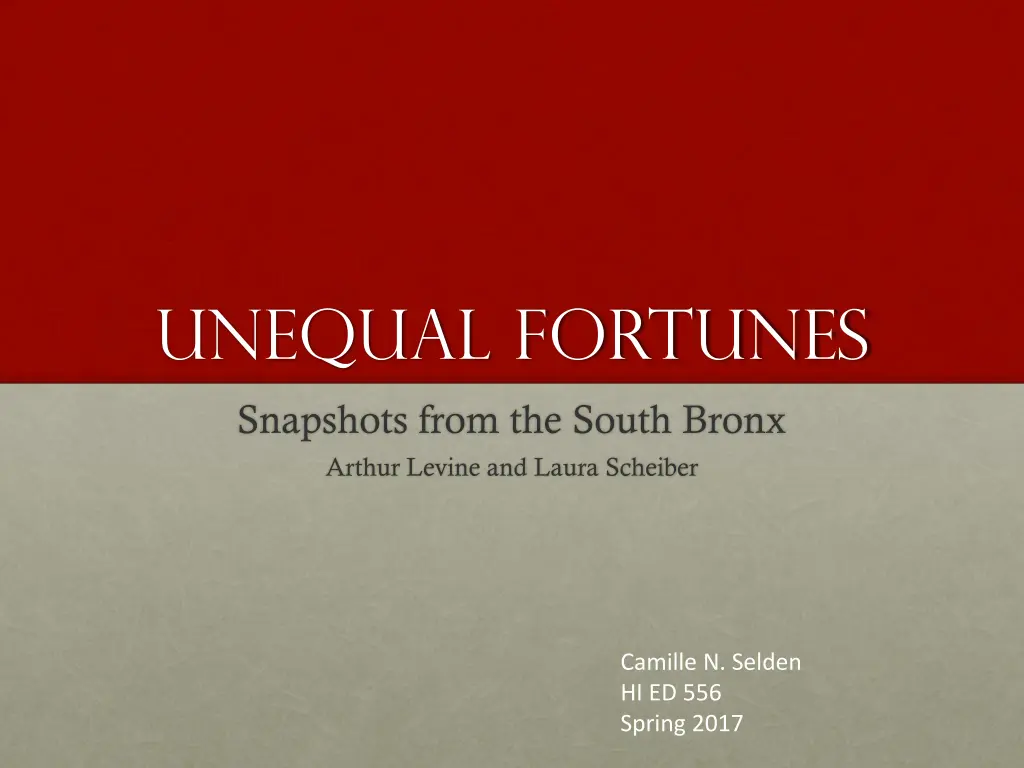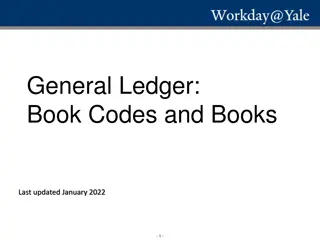
Contrasting Lives on Creston Avenue in the South Bronx
"Explore the diverse life stories of Leo Disla and Arthur Levine, two individuals from different backgrounds who lived on Creston Avenue in the South Bronx. Witness how cultural, social, and environmental factors shaped their destinies in this compelling narrative."
Download Presentation

Please find below an Image/Link to download the presentation.
The content on the website is provided AS IS for your information and personal use only. It may not be sold, licensed, or shared on other websites without obtaining consent from the author. If you encounter any issues during the download, it is possible that the publisher has removed the file from their server.
You are allowed to download the files provided on this website for personal or commercial use, subject to the condition that they are used lawfully. All files are the property of their respective owners.
The content on the website is provided AS IS for your information and personal use only. It may not be sold, licensed, or shared on other websites without obtaining consent from the author.
E N D
Presentation Transcript
Unequal fortunes Snapshots from the South Bronx Arthur Levine and Laura Scheiber Camille N. Selden HI ED 556 Spring 2017
summary This is a story of Leo Disla and Arthur Levine who lived in the South Bronx in the same neighborhood on Creston Avenue 40 years apart. Leo is a teenager from the Dominican Republic who moved to the South Bronx when he was 8 years old, and Arthur is the past president of Teacher s College who is from a Jewish family and grew up in the South Bronx in the late 50s. Arthur and Leo s stories paint two different pictures of life on Creston Avenue and how different environmental, cultural and social interactions shaped the outcomes of their lives.
Authors Purpose The purpose of this book is to show how and what factor s influence educational and social mobility through a specific case comparison of life on Creston Avenue during two different time periods through two very different individuals. This book evolved substantially over time as we considered and reconsidered how best to tell the story of the decline of America s inner cities, the impact of poverty on the nation s children, and the prospects for renewal via an account of life on Creston Avenue (Levine & Scheiber, 2010, p. 3).
Authors purpose continued The highway to mobility is gone. Any child who moved up and out must create the road for her- or himself much as the first pioneers did going west. Most of the children are consigned to remain in a world of poverty, with inadequate educations, dead- jobs, and violence. This is the world where Leonel Disla grew up and died (p. 43).
People in the book Leo- Dominican born teenager who lived on Creston Avenue in the South Bronx in the 90s. His parents were born in the Dominican Republic. Arthur- One of the book s authors, he lived in Carlos apartment as a child in the 50s. He is Jewish with Russian and Romanian parents that were born in the U.S. Juan Carlos- Leo s friend. Graduated College Carlos- Leo s friend (lives in the apartment Arthur lived in) Graduated College Lisandro- Leo s brother. Attended, but did not finish college Moreno- Leo s father Ana- Leo s girlfriend. Did not finish high school Maholi- Leo s sister. Did not finish high school Miriam- Leo s mom Education in the Dominican Republic Aneudys- Leo s friend. Attended medical assistant school, but did not graduate. Photo Credit: Diario Libre Photo Credit: NJSpotlight
Creston Avenue Arthur Safe neighborhood Neighborhood residents lived their a long time Mainly Jews and Catholics Over 80% White Leo Neighborhood had gangs and drugs Neighborhood were transient Mainly minorities lived on Creston Avenue
Education cont. Leo Mother felt education was very important Mother wanted her kids to attend class but couldn t enforce their attendance at school. Mother graduated post secondary school in the Dominica Republic Father completed a few years of elementary school Often skipped school Didn t finish high school Killed at age 19 Arthur Parents felt education was very important Mother checked his homework. Parents very active with school. Mother graduated high school Father completed the tenth grade Always attended school Graduate high school Graduated college in 4 years and went on the graduate school and to become President of Teacher s College, Columbia University.
Education cont. The oldsters described school as a job; you were supposed to be there every day. You had to do your homework every night. Their futures depended upon it (Levine & Scheiber, 2010, p. 112). Leo and his friends felt doing more than being in school was unreasonable and attending class wasn t a regular occurrence (Levine & Scheiber, 2010, p.112).
Occupations Leo s mom (Lived with Leo) Factory Work Cleaning McDonald s Leo s dad (Did not live with Leo) Worked in NYC and Dominican Republic Arthur s mom (Lived with Arthur) Housewife Seamstress Arthur s dad (Lived with Arthur) Postal carrier Bank security work
Neighborhood change Working class whites moved out and minorities moved in. 18,000 jobs lost (1959 1974) Arson rampant (1970s &1980s) Violent crime Banks stopped investing: new mortgages dropped 85% Crack influx (1980s) Gangs are a common sight Divorce increased seven fold Half of adults graduated high school compared with 87% nationally Caucasian population less than 2% (more than 80% during the time Arthur was on Creston Avenue). Levine & Scheiber, 2010, p. 42
Authors views But the fundamental difference between Arthur s neighborhood then and now is that the American dream has died. When Arthur lived there, the American dream was the neighborhood religion (p. 43). The mechanisms for social mobility families mentors/role models, neighbors, and schools which were so effective for Arthur and his friends no longer work (p. 117). In the end what all this adds up to is the fact that the children who grew up with Arthur had linguistic, racial, economic, and educational advantages, and the human and institutional capital to make mobility possible. Leo s generation did not (p. 120).
Book take aways Education system is not equal and in inner cities it is truly broken. Race and Income influence mobility and we need to work to deconstruct the structures that inhibit children from obtaining a college education. Anomalies exist and the conditions of their success can be replicated to help others reach college. A child s environment is extremely important in their educational and social mobility and it s our responsibility to help provide a nurturing environment.
Organizations Of Change Programs dedicated to increasing numbers of high school graduates that are college bound. I Have A Dream (1981) East Harlem. The Harlem Children s Zone (Late 1990s) Central Harlem. Say Yes to Education (1987) Philadelphia. The most important commonality in the three programs is that they demonstrate that America has the capacity today to reduce the number of children lost unnecessarily like Leo, and to dramatically increase the proportion, like Juan Carols and Carlos, who are graduating from high school and attending College (p. 158).
Questions Input, environments and outcomes How do we provided low income students with the foundation they need to succeed throughout their childhood? How can we change the environment for low income inner city kids on a large scale? How do we provided incentive for students to go to high school, graduate and apply to college a challenging outcome? How do we improve the home/neightborhood environment to facilitate giving these children an opportunity to go to college?
References Levine, A., & Scheiber, L. (2010). Unequal fortunes: Snapshots from the south bronx. New York, NY: Teachers College Press. https://www.diariolibre.com/noticias/declaran- culpable-a-sargento-polica-de-nueva-york-por-asesinar- un-dominicano-KBDL908741 http://www.njspotlight.com/stories/13/07/30/spotlig ht-q-a-arthur-levine/






















